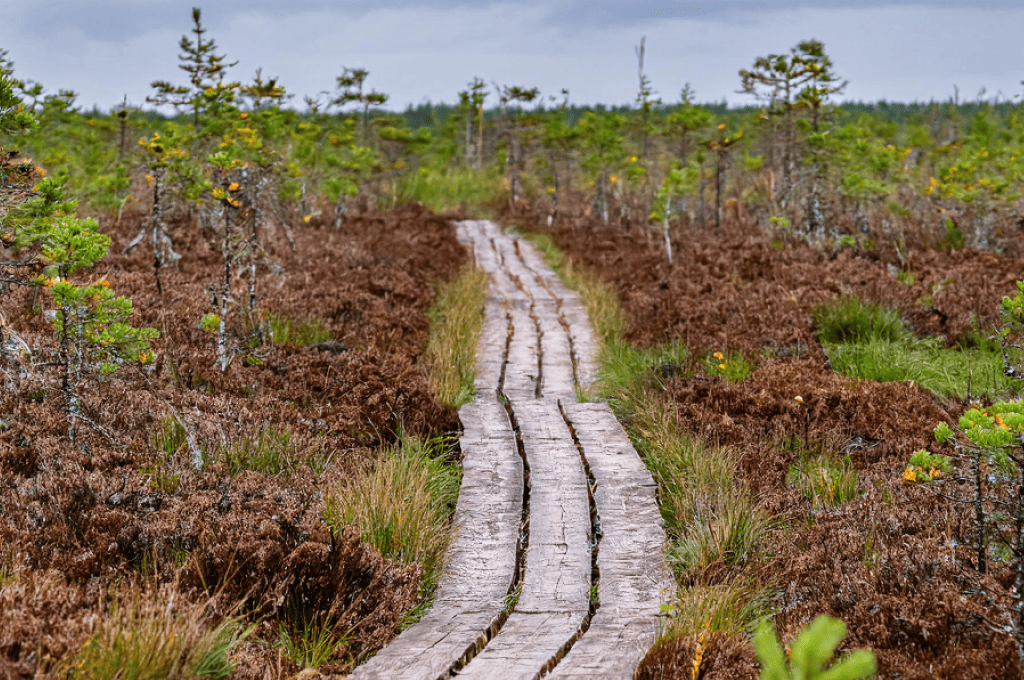
Product walkthrough, trial, POCs, enterprise offering, support and more. Speak with one of our specialists.


Product walkthrough, trial, POCs, enterprise offering, support and more. Speak with one of our specialists.

Climate changes

Peatlands are a type of wetland ecosystem formed from the accumulation of organic material, such as decomposed plant and tree remains, which break down very slowly due to waterlogged soil conditions. This process takes thousands of years and produces dark, carbon-rich soil. In Indonesia, peatlands are widespread, particularly in Sumatra, Kalimantan, and Papua, covering an estimated area of more than 13 million hectares[Ref].
Peatlands are unique due to their role as natural carbon stores. Although they account for only about 3% of the world's land area, they hold over 30% of the global soil carbon[Ref]. This makes them crucial for maintaining the Earth's climate balance.
Indonesia is among the countries with the largest tropical peat carbon reserves in the world. These peatlands store more than 57 gigatons of carbon, making them a vital carbon sink in the global effort to slow climate change[Ref].
When peatlands remain in their natural, waterlogged state, the carbon they store can remain stable for thousands of years. However, when drained or burned, the stored carbon is released into the atmosphere as greenhouse gases such as carbon dioxide (CO2) and methane (CH4). These emissions significantly contribute to global warming.
Peatlands also regulate water cycles by storing water during rainy seasons and slowly releasing it during dry periods, thus preventing floods and extreme droughts.
Despite their immense potential for climate change mitigation, peatlands pose significant risks if mismanaged. One of the main threats is peatland fires. Dry peat soils ignite easily and are difficult to extinguish because fires can burn deep underground.
Every year, Indonesia faces haze disasters caused by peatland fires, especially during the dry season[Ref]. These fires not only release millions of tons of CO2 but also cause health problems, economic losses, and a decline in quality of life for nearby communities.
The conversion of peatlands into oil palm plantations or industrial forest areas is another serious threat. This often begins with draining the land via canals, which damages the peat’s natural structure and increases both fire risk and carbon emissions.
Peatland degradation in Indonesia results from various pressures, both large-scale and small-scale activities. One major cause is land-use change for agriculture and industry. Land clearing is often carried out using environmentally harmful methods, such as drainage and burning, despite regulations prohibiting these practices[Ref].
A lack of coordination in spatial planning and land use further exacerbates the issue. In some regions, land use occurs in deep peat areas, which are ecologically sensitive and should be protected. In certain cases, land-use decisions are not based on up-to-date ecological data, leading to significant environmental impacts.
Limited community involvement in decision-making also hampers conservation effectiveness and creates a gap between policy and field implementation. Moreover, local understanding of peatlands' ecological functions is still limited. In some areas, small-scale farmers open land by burning because it is perceived as cheaper and easier, even though it is highly risky and releases large amounts of carbon.
Recognizing the extensive damage to peatlands, the Indonesian government established the Peatland Restoration Agency (BRG) in 2016. Its main mission is to restore peatland hydrology through three primary approaches: rewetting, revegetation, and revitalizing local economies[Ref].
Rewetting involves building canal blocks to raise groundwater levels, making the land less fire-prone and keeping carbon stored. Revegetation is carried out by planting native peatland species such as jelutung, ramin, and tumih. Revitalizing local economies focuses on providing environmentally friendly livelihood alternatives, such as freshwater fish farming, forest honey production, and handicrafts.
In addition to BRG, NGOs, academics, and international organizations are also engaged in peatland conservation. Satellite-based monitoring, community education, and data-driven policy development strengthen these protection measures.
Despite ongoing efforts, many challenges remain in safeguarding peatlands. One of the greatest challenges is the conflict of interest between conservation and industrial expansion. Economic pressures to clear land often outweigh environmental considerations.
Funding is another significant hurdle. Restoring degraded peatlands requires substantial resources, especially in severely damaged areas. Private sector participation and international support through climate financing schemes such as REDD+ or green bonds are essential.
Monitoring and law enforcement must also be strengthened. Technologies such as satellites and drones can help with early fire detection and land-use violations. On the other hand, local community engagement is critical, without their support, conservation programs will not be effective.
The government must ensure consistent enforcement of peatland protection regulations (PP No. 71/2014 and PP No. 57/2016), particularly the ban on opening deep peatland (more than 3 meters). Inter-agency coordination and data synchronization are also key to success.
Indonesia’s peatlands are an invaluable ecological asset. Their role in carbon storage and water regulation makes them a crucial defense against the climate crisis. However, without proper protection, peatlands can become a major source of ecological, social, and economic disasters.
Through strict protection, sustainable restoration, and active community participation, peatlands can continue to provide long-term benefits for current and future generations. Protecting peatlands means safeguarding the future climate of Indonesia and the world.






















Jejakin’s green programs combine high-tech monitoring, biodiversity restoration, and community-led initiatives to deliver powerful, sustainable change across ecosystems.








